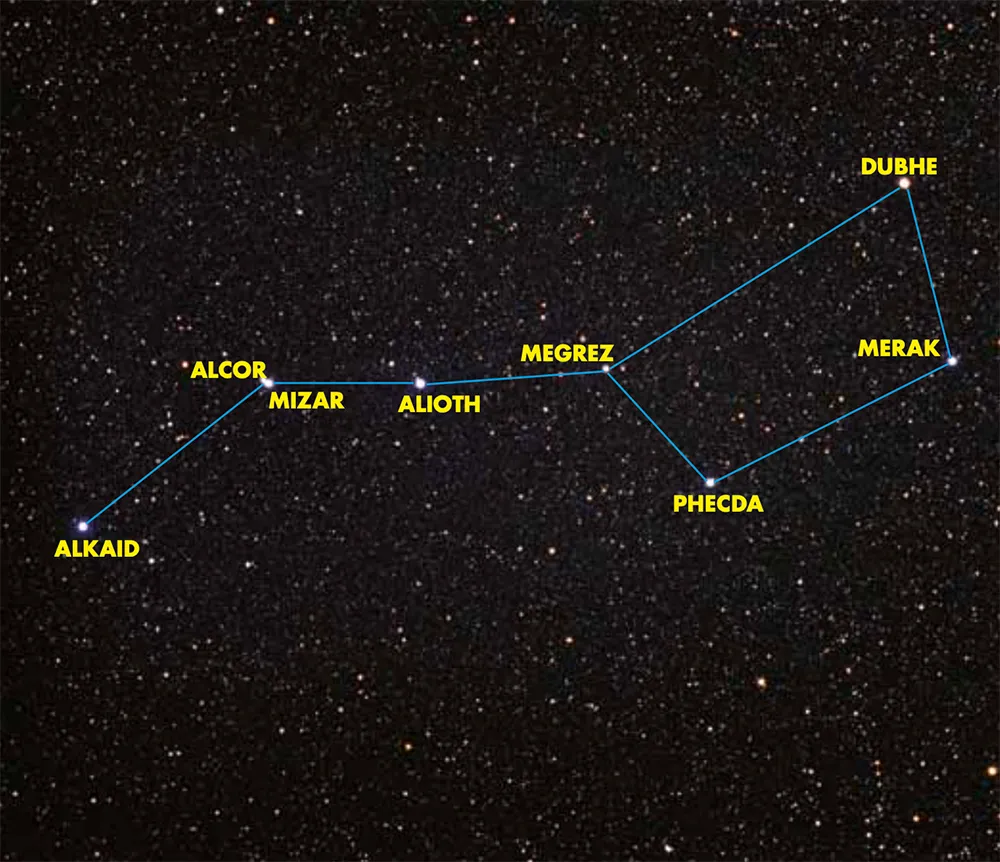Dubhe (Alpha (α) Ursae Majoris) is one of the pointer stars in the familiar asterism known as the Plough or Saucepan.
It marks the northeast corner of the Plough’s blade or Saucepan’s pan however you see it.
The second pointer star is Merak (Beta (β) Ursae Majoris). A line extended from Merak through Dubhe eventually brings you to the North Star, Polaris (Alpha (α) Ursae Minoris); hence the term ‘Pointers’.

Facts about star Dubhe
Dubhe shines at mag. 1.8 and is located 123 lightyears from the Sun.
Despite its designation as Alpha Ursae Majoris, Dubhe is actually the second brightest star in Ursa Major.
The brightest is Alioth (Epsilon (ε) Ursae Majoris), the third star in from the end of the Plough’s handle.
The reason for the non-brightness lettering sequence is that Bayer labelled the stars in the Plough from east to west.
Consequently, if you know the first seven letters of the Greek alphabet – alpha (α), beta (β), gamma (γ), delta (δ), epsilon (ε), zeta (ζ), eta (η) – then you can deduce the Bayer designation of the stars in the Plough easily.

Of the seven stars that form the Plough, the inner-five, Beta (β), Gamma (γ), Delta (δ), Epsilon (ε) and Zeta (ζ) Ursae Majoris are all part of a cluster located at a distance of 80 lightyears.
Dubhe and Alkaid (Eta (η) Ursae Majoris) aren’t part of this cluster and over time will move in different directions to the other five stars.
Of the seven stars Dubhe is the coolest, the other six being hot blue-white stars.
Dubhe has a spectral class of K0III, indicating that it’s an orange giant star. When you look at the Plough see if you can spot the difference in colour between Dubhe and the other stars in the pattern.
Dubhe is a spectroscopic binary star system. The primary, Dubhe A, is 4.3 times as massive as the Sun, the secondary 1.6 times.
Dubhe A is also over 300 times more luminous than the Sun. The name Dubhe derives from ‘the bear’ in Arabic.
This guide originally appeared in the April 202o issue of BBC Sky at Night Magazine.
